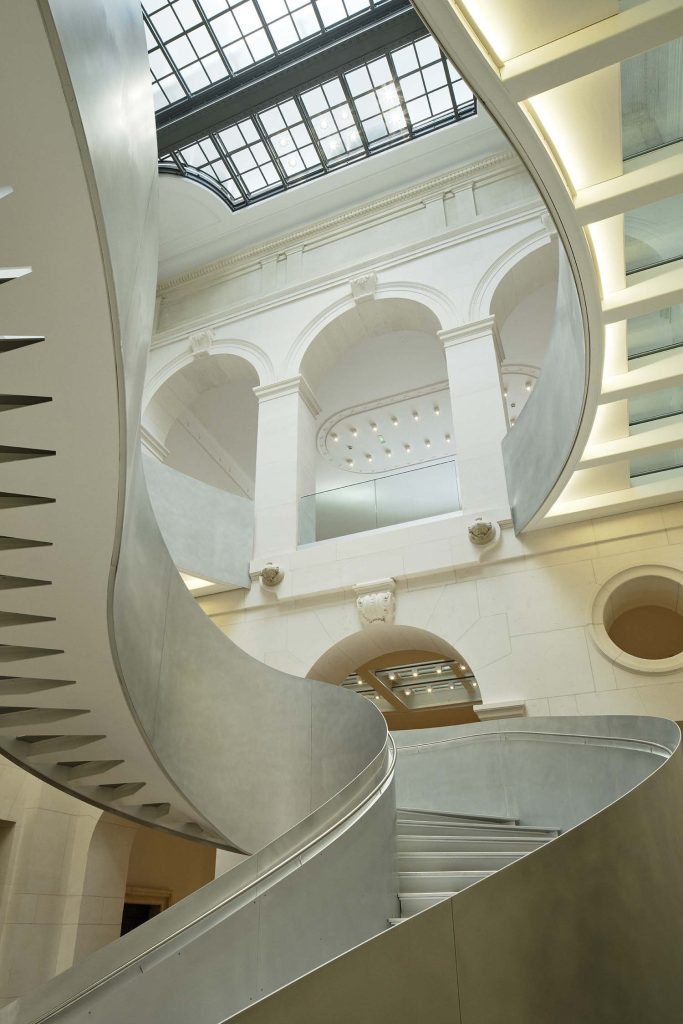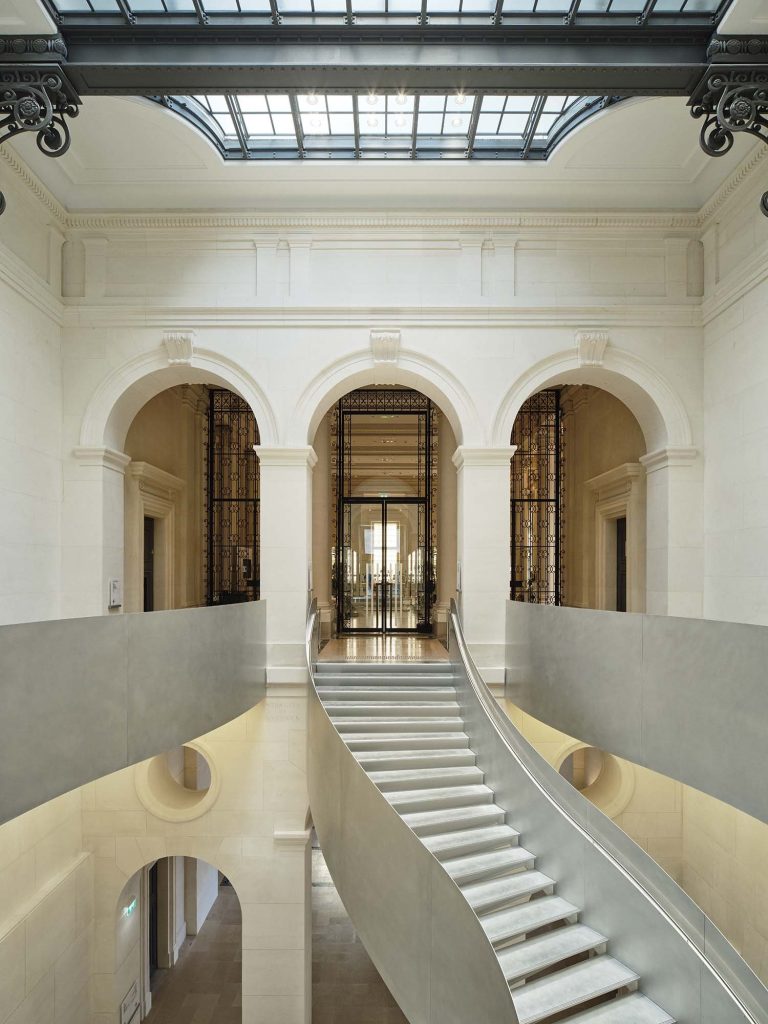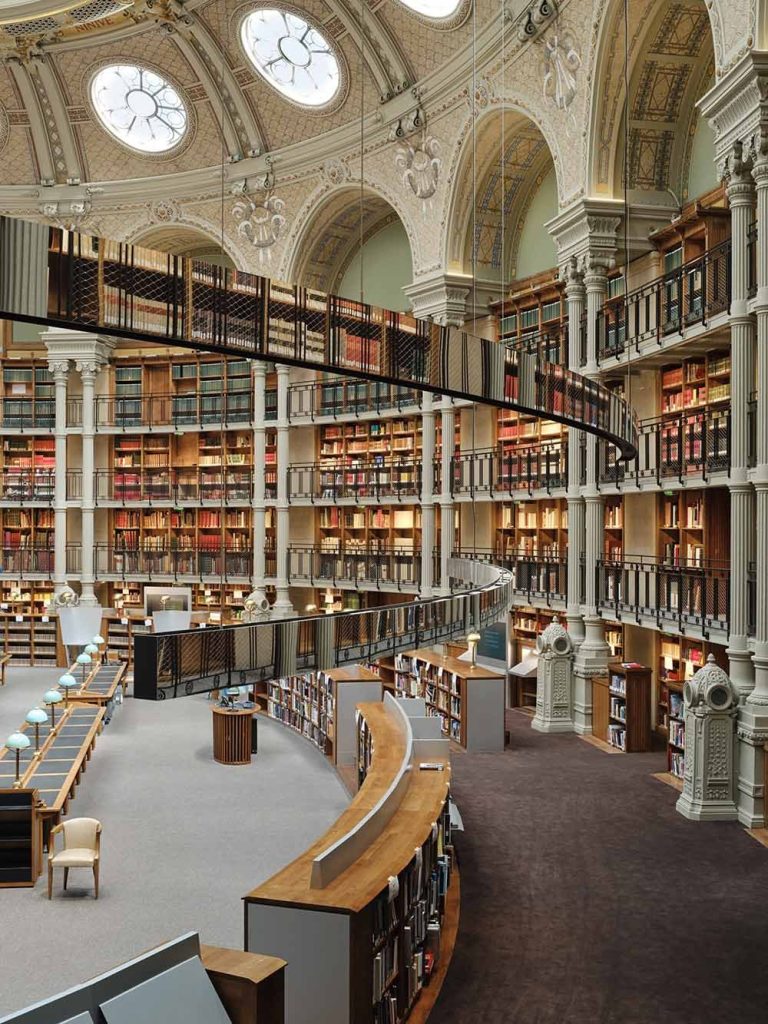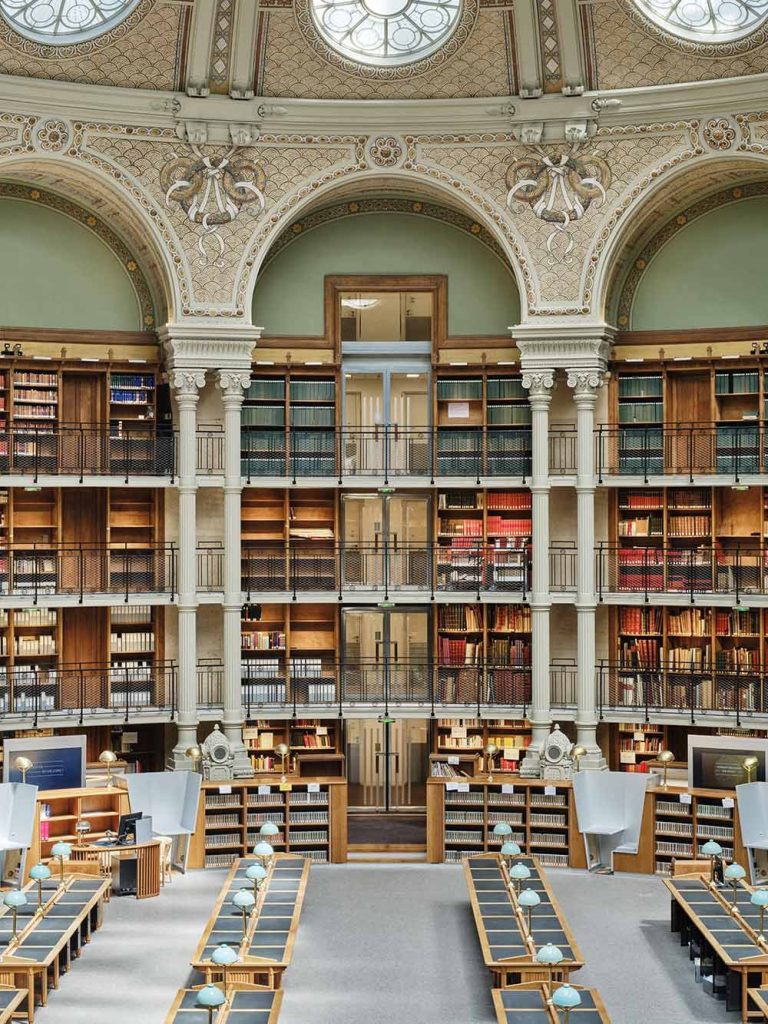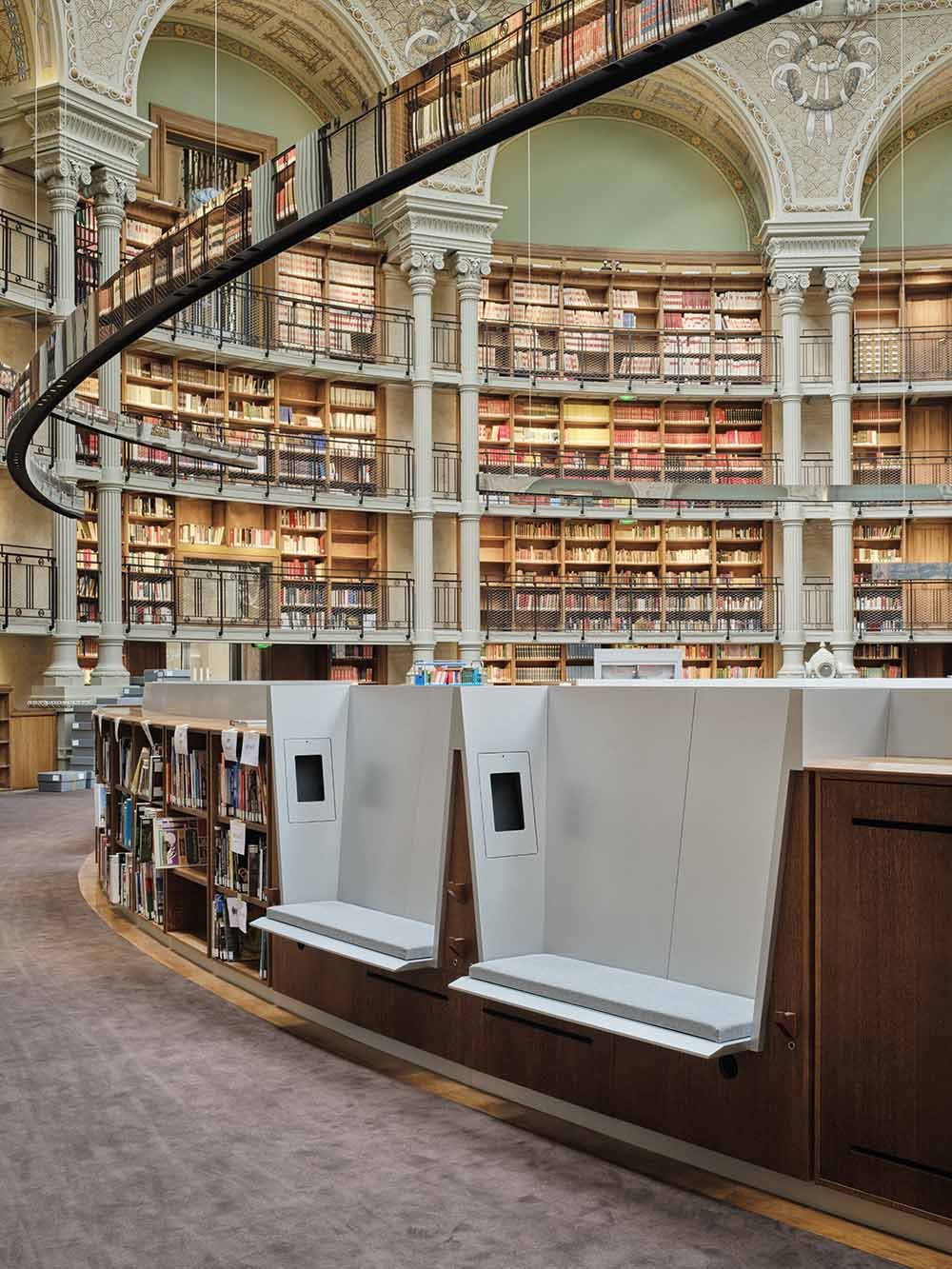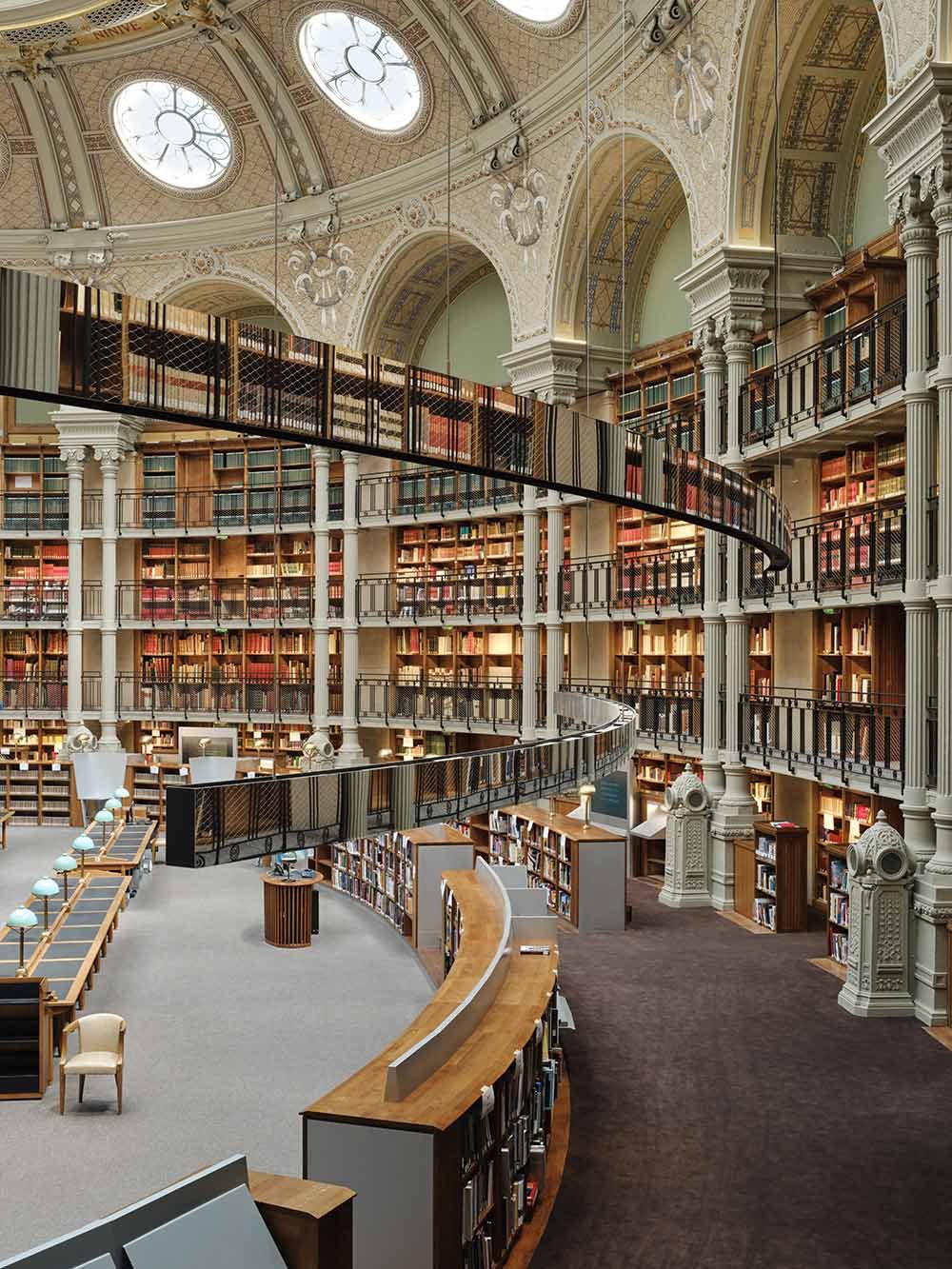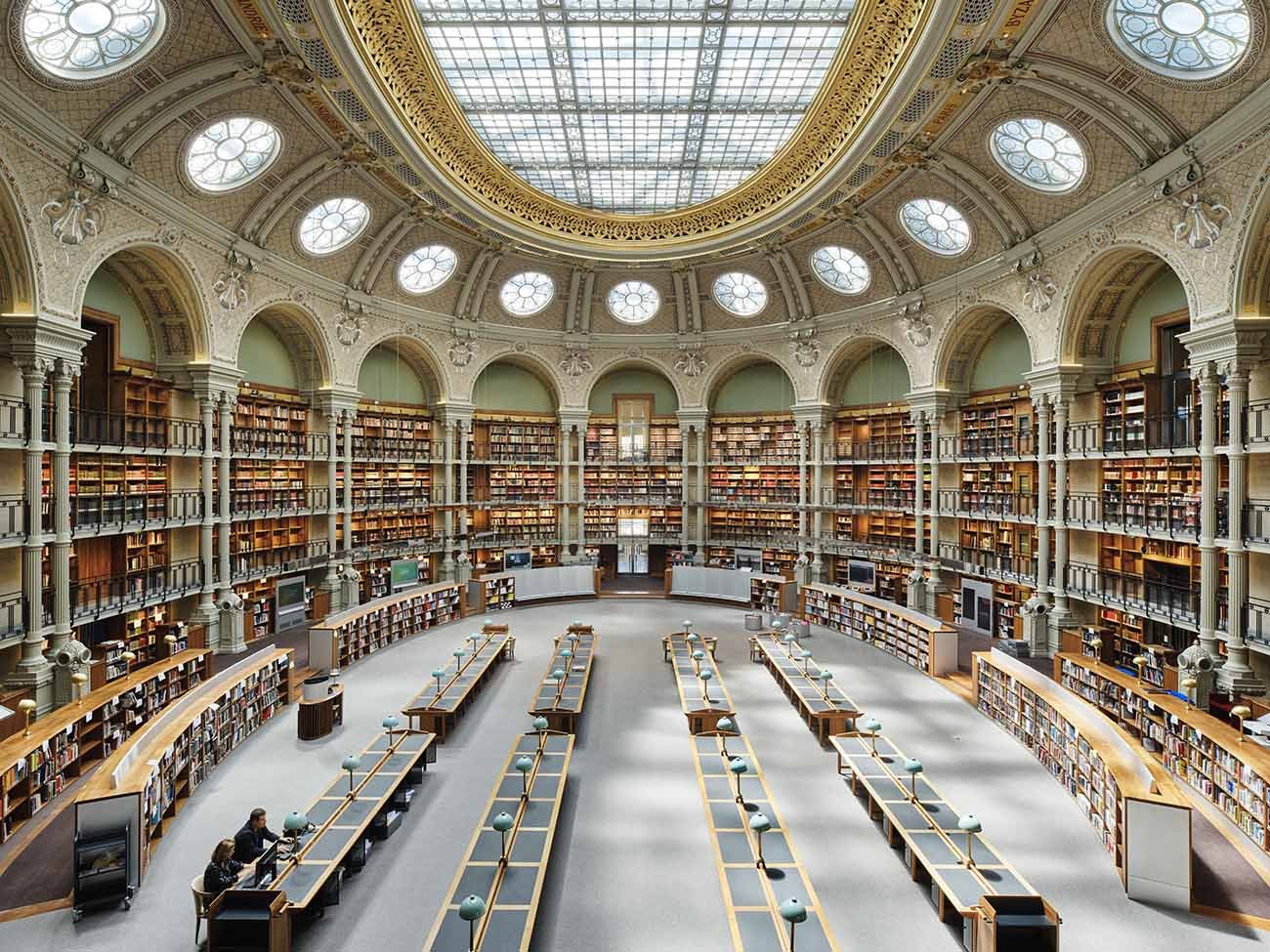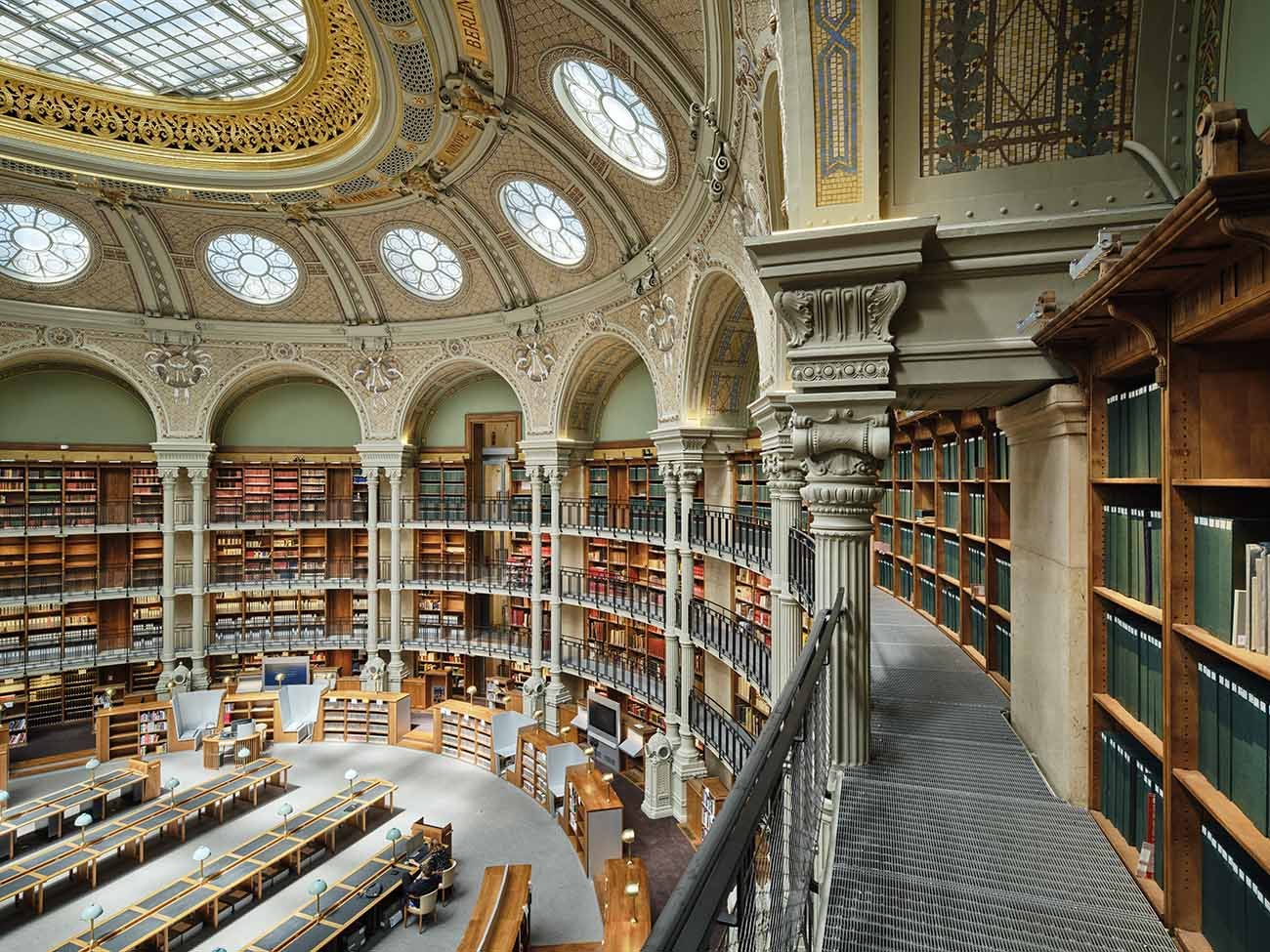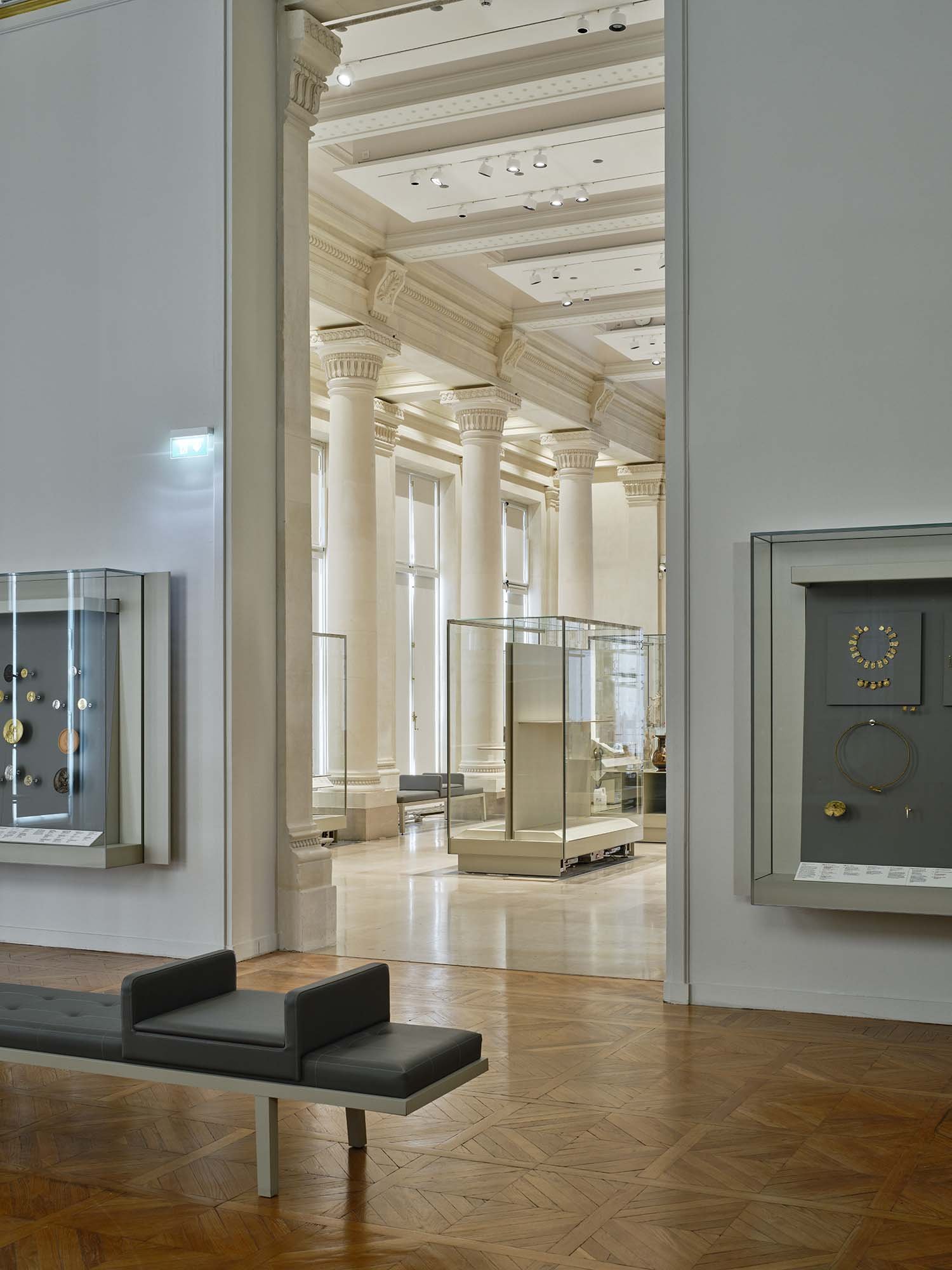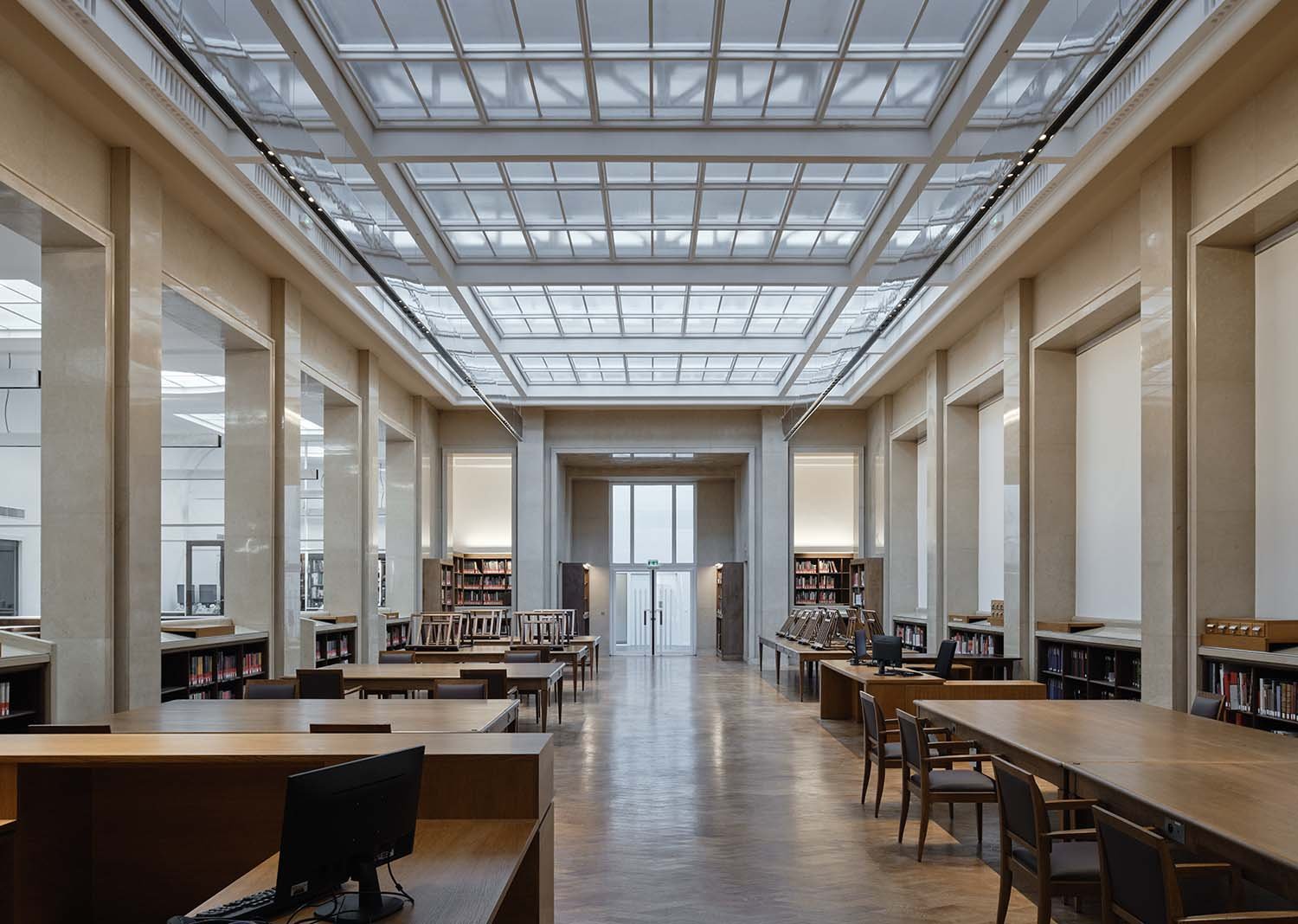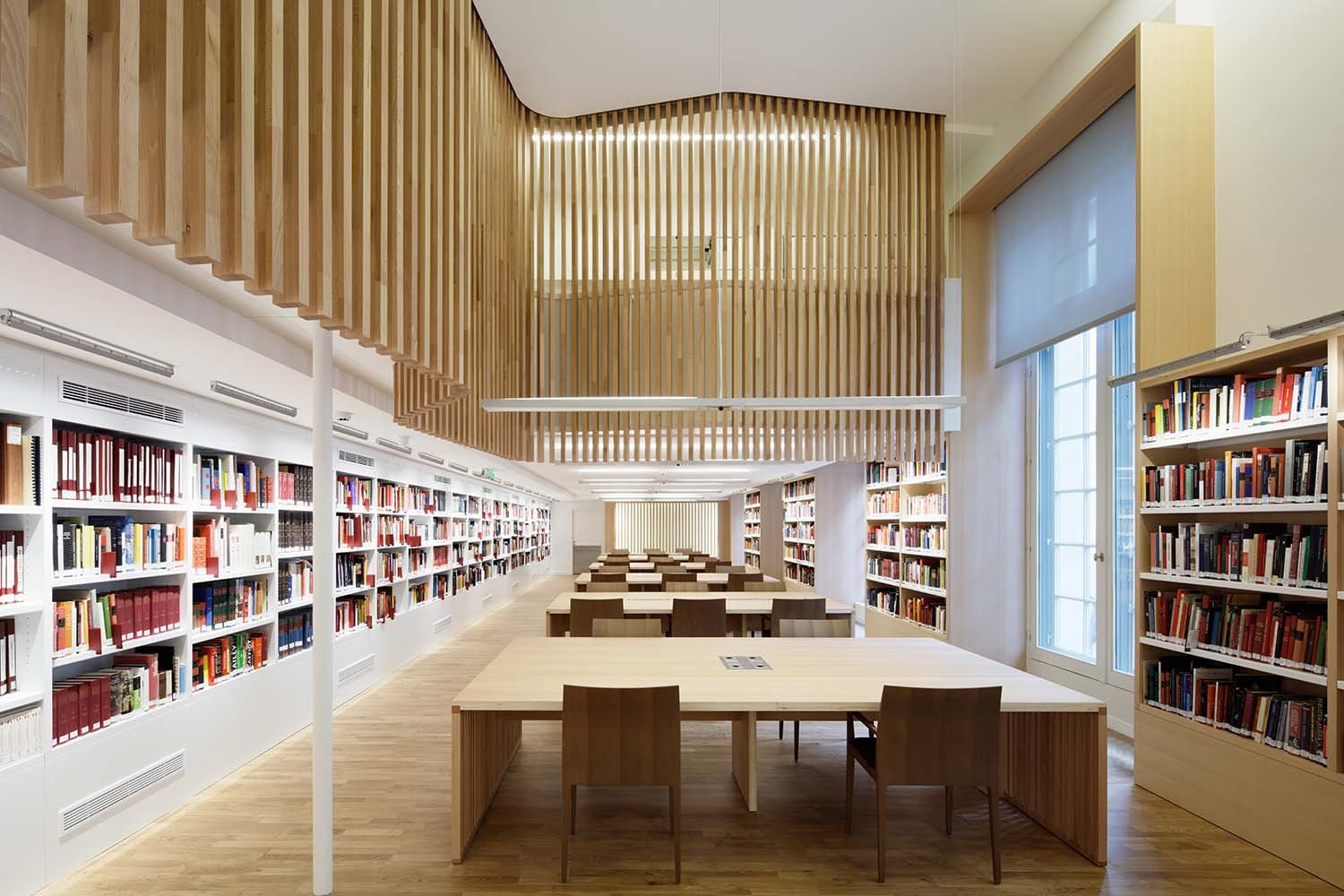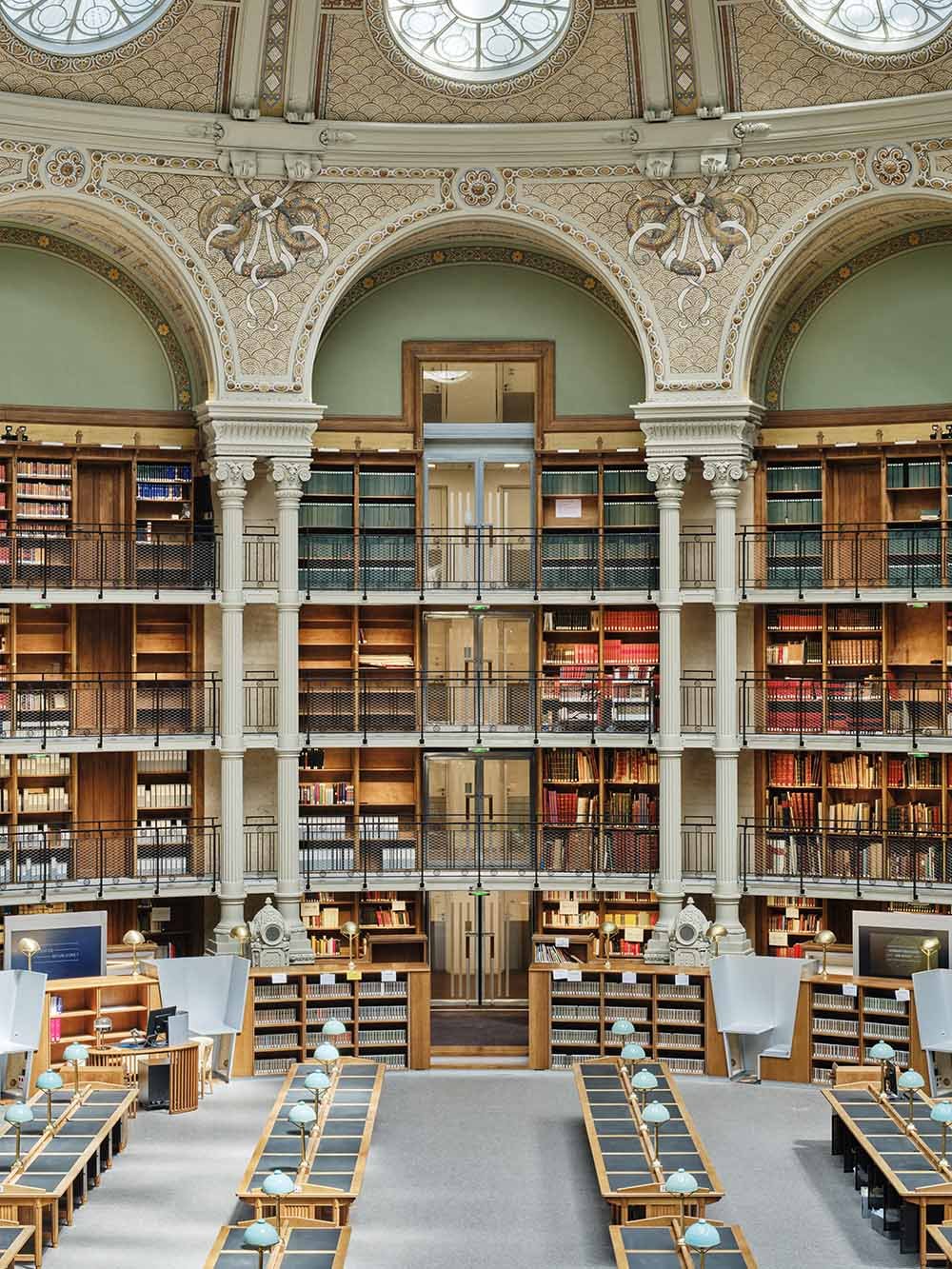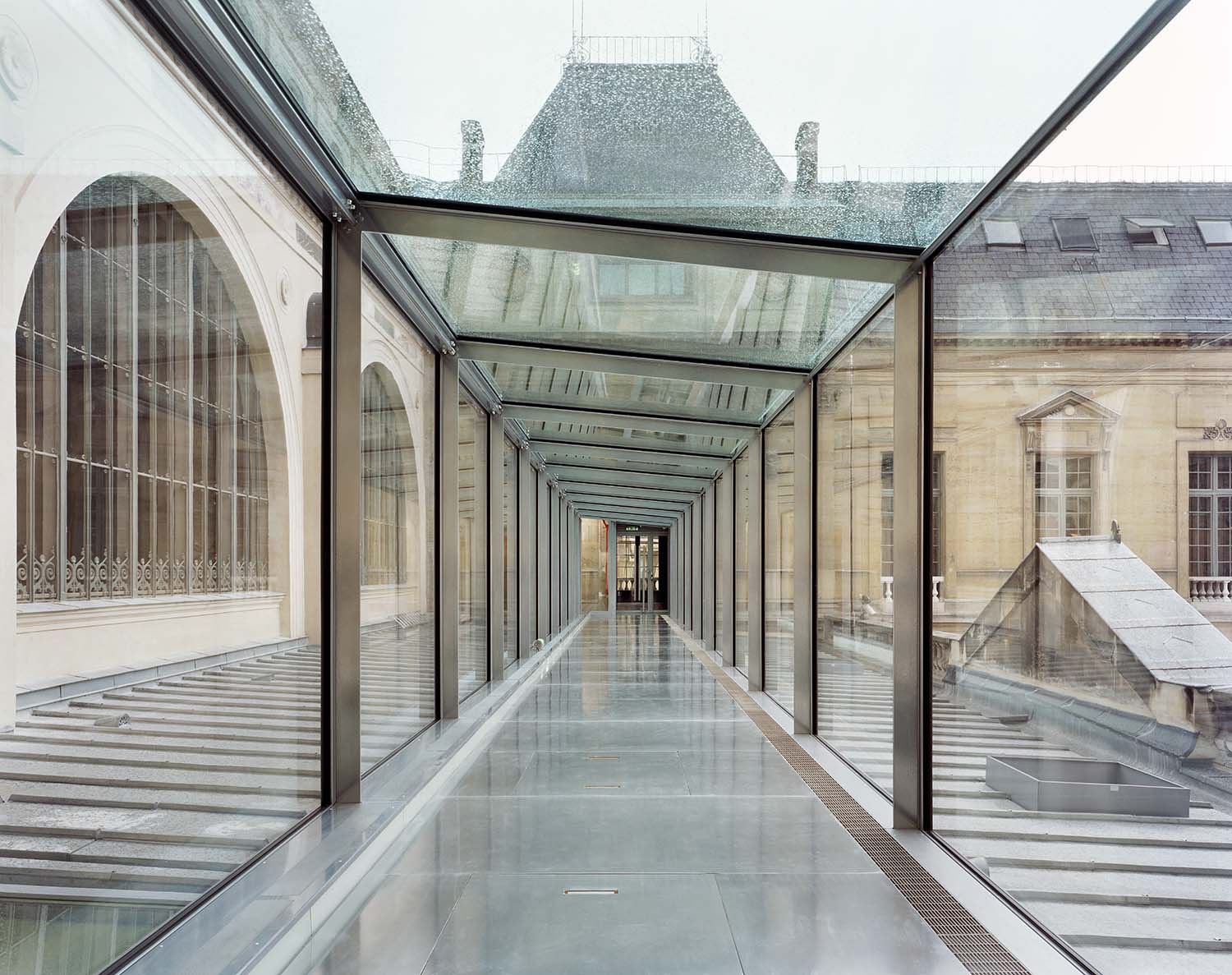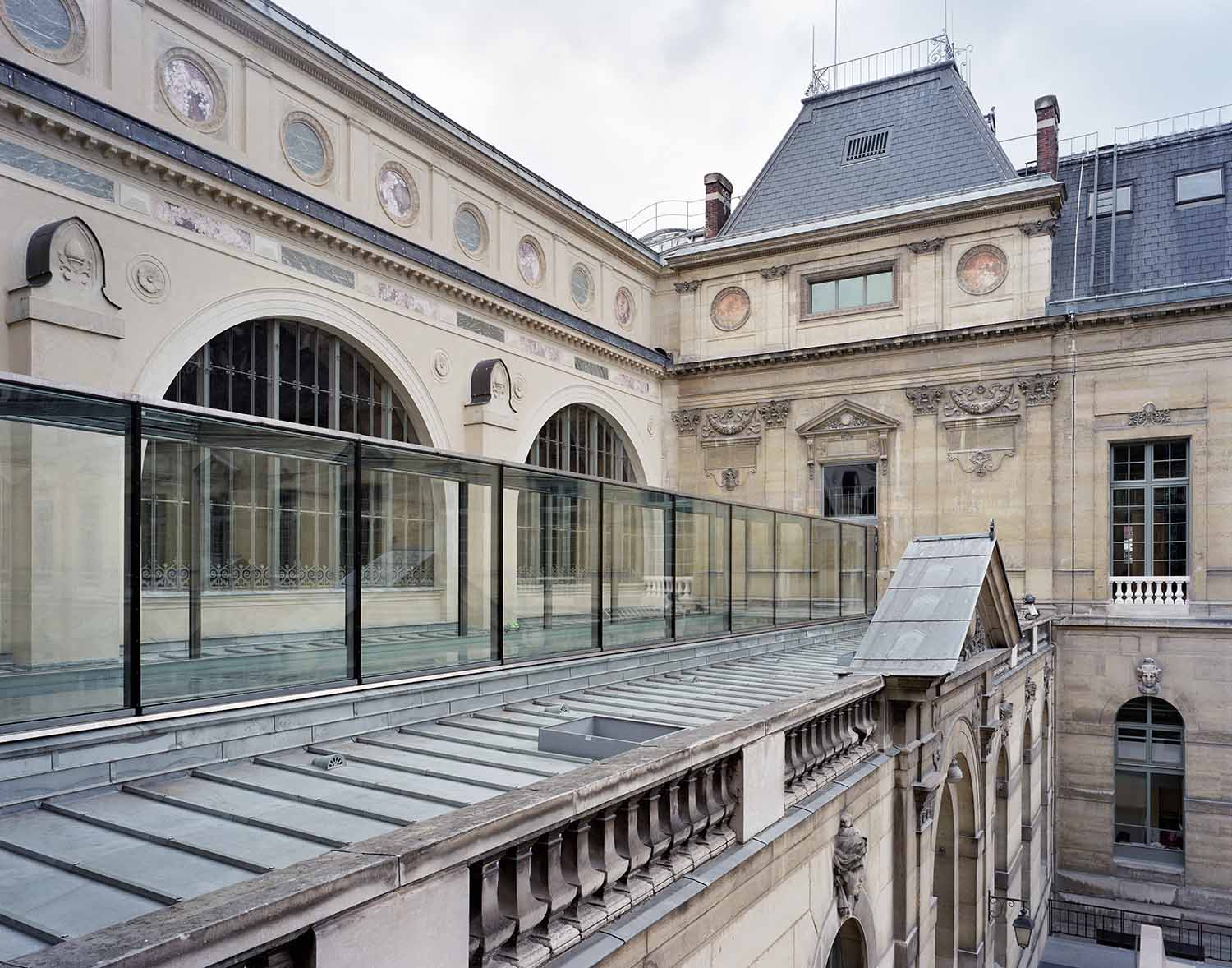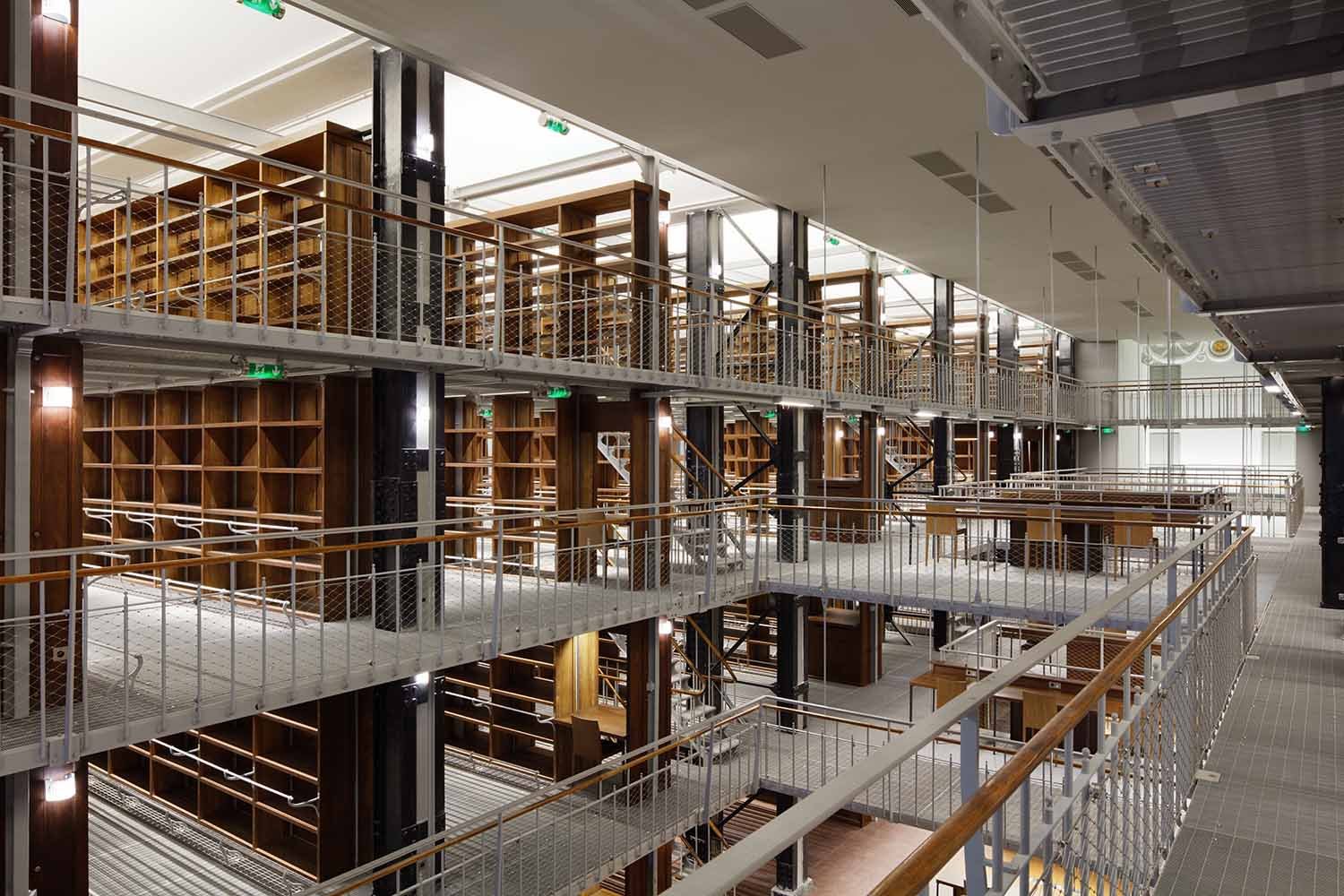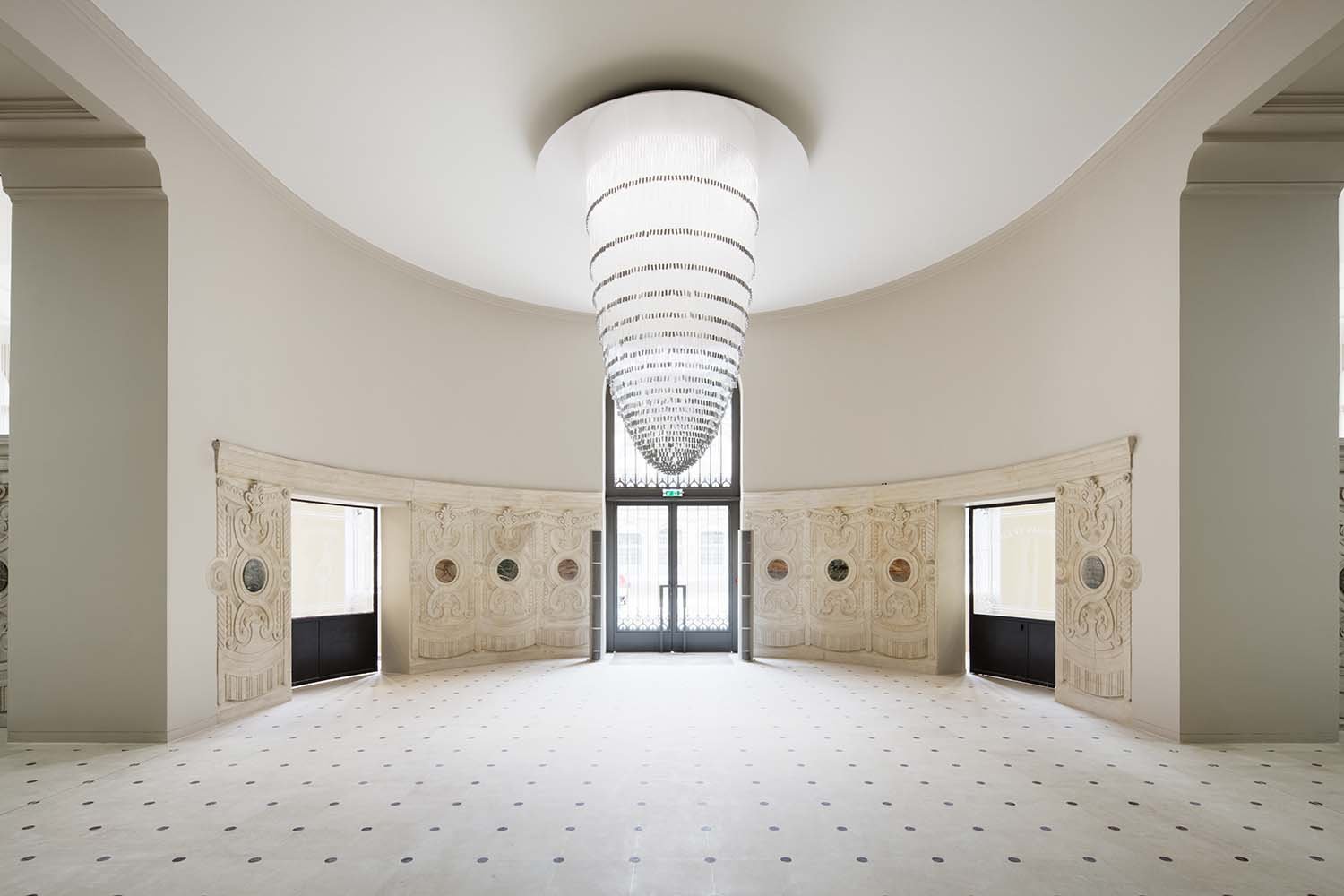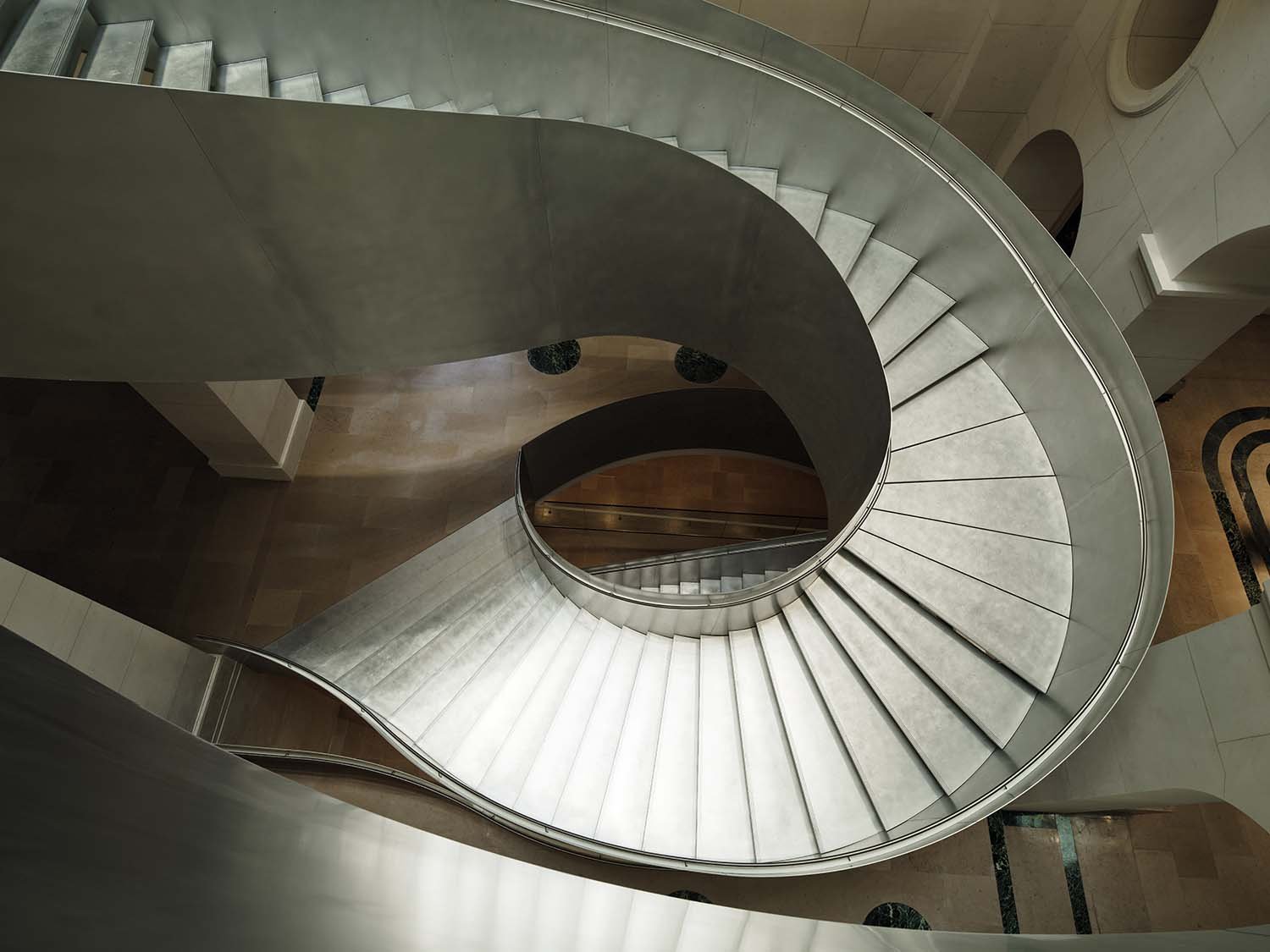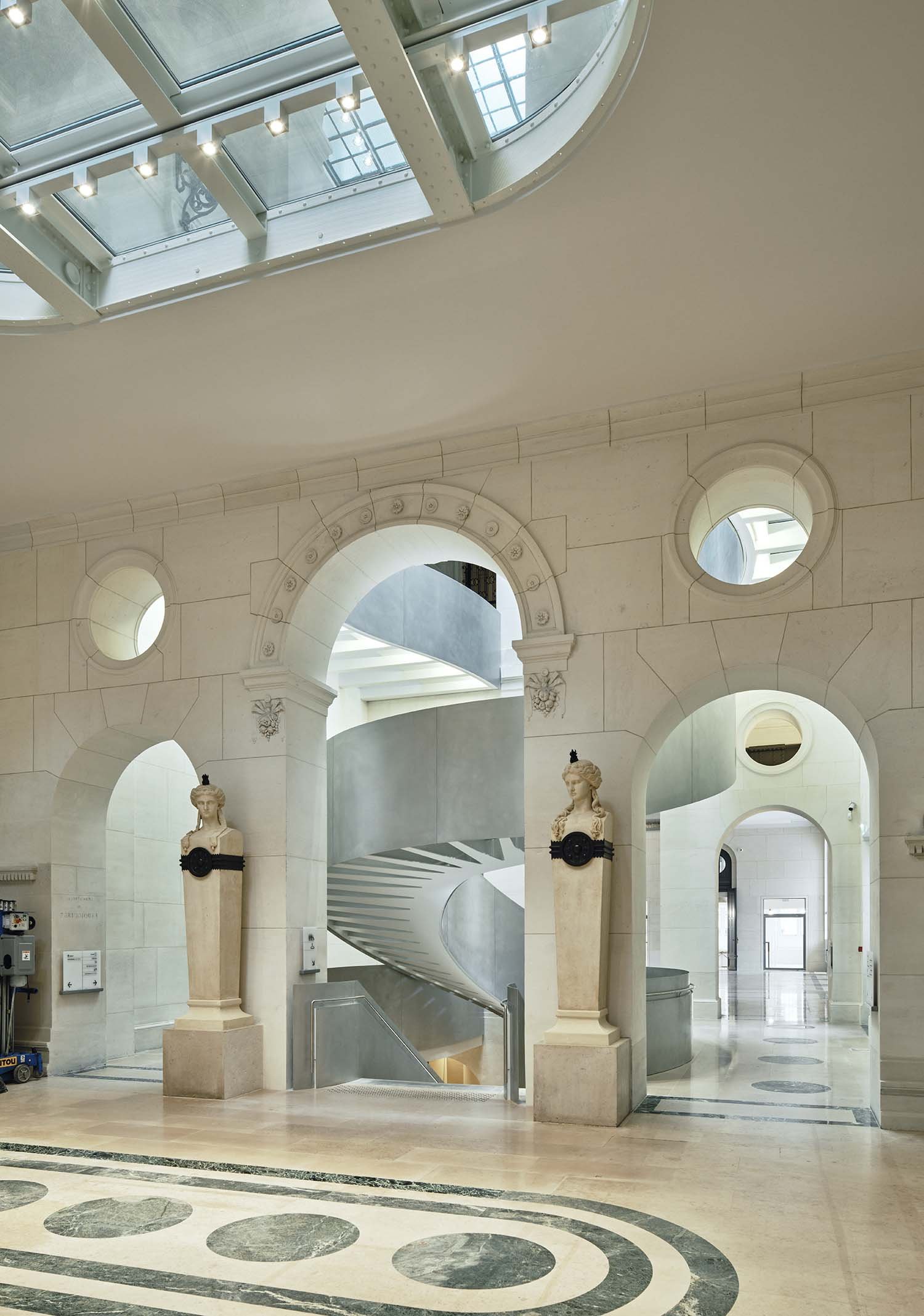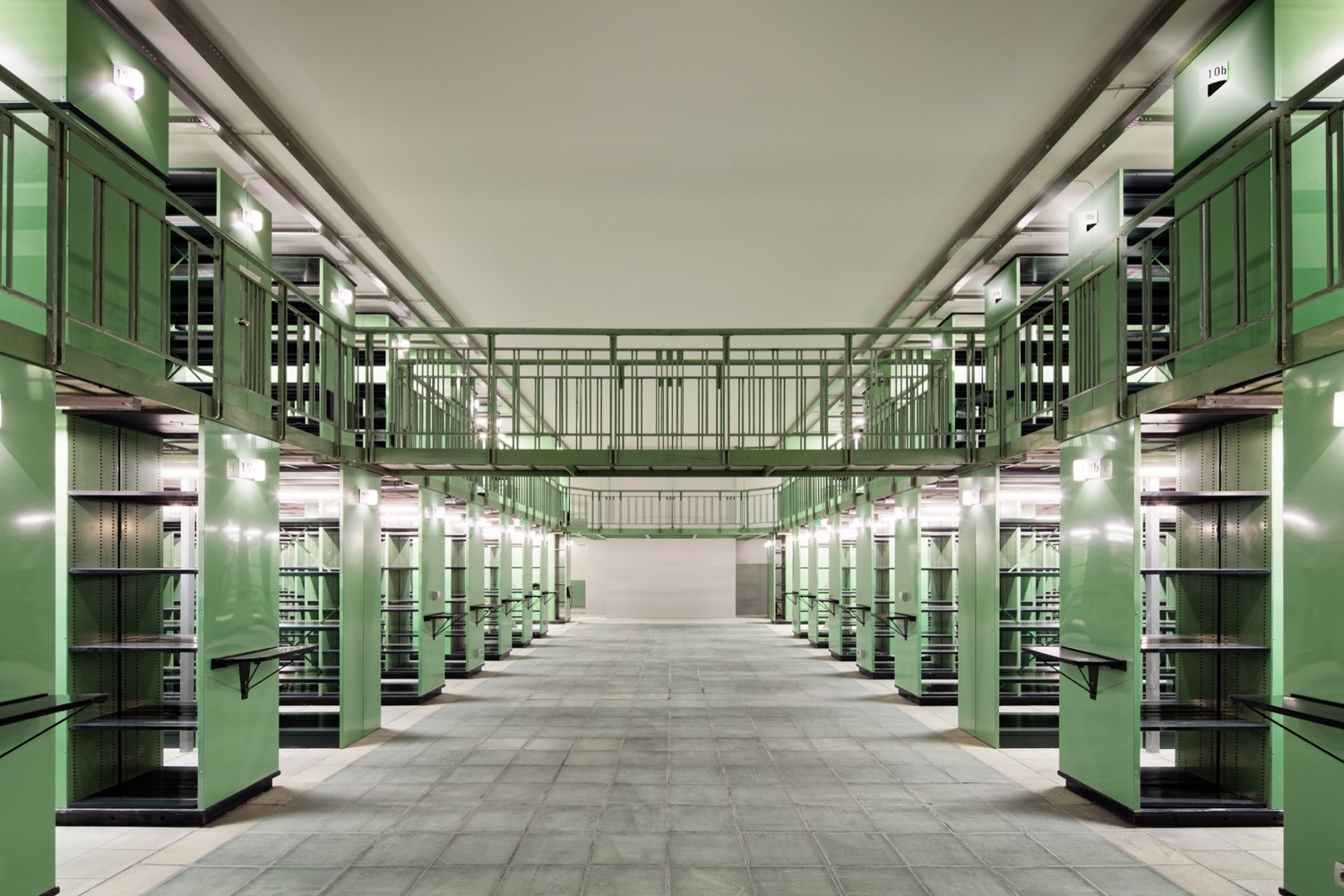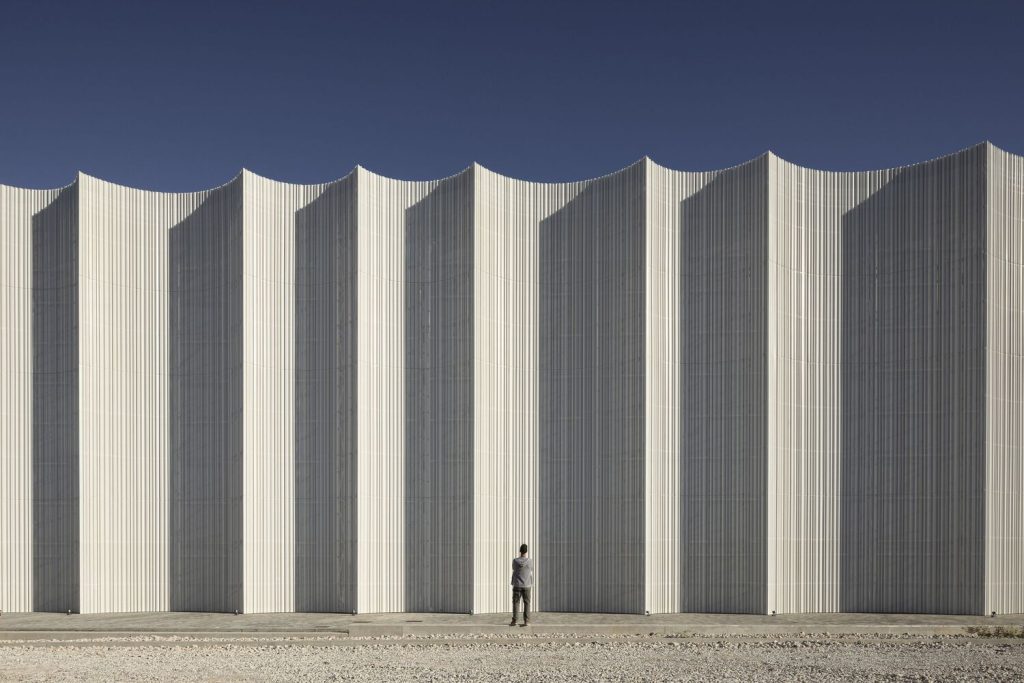
BnF Bibliothèque Nationale de France / Atelier Bruno Gaudin
After over a decade from the start of the regeneration and restoration works, divided into two phases, the historic Bibliothèque Nationale de France in Paris reopened to the public last September. Strongly opposed by the architectural and scientific community, as it was accused of having removed important elements of historical value, the intervention has transformed the large cultural complex – as we read in the press release of Atelier Bruno Gaudin, project management studio – to meet the contemporary challenges related to welcoming a wider public, opening it up to the urban spaces and sharing with the younger generations.
The intervention concerned almost all the spaces of the BnF, located in what is called, from the name of the street where the main entrance is located, the Richelieu Quadrangle: a series of buildings from different eras, which extend over an area of approximately 60,000 sqm, such as the 17th-century Mazarin Gallery and Mansart Gallery, the 18th-century Medals Room, the 19th-century marvelous Labrouste Reading Room and Prints Room and the 20th-century Oval Room, where over the course of the centuries important architects worked such as François Mansart, Robert de Cotte, Henri Labrouste, Jean-Louis Pascal, Alfred-Henri Recoura, Michel Roux-Spitz and André Chatelin.
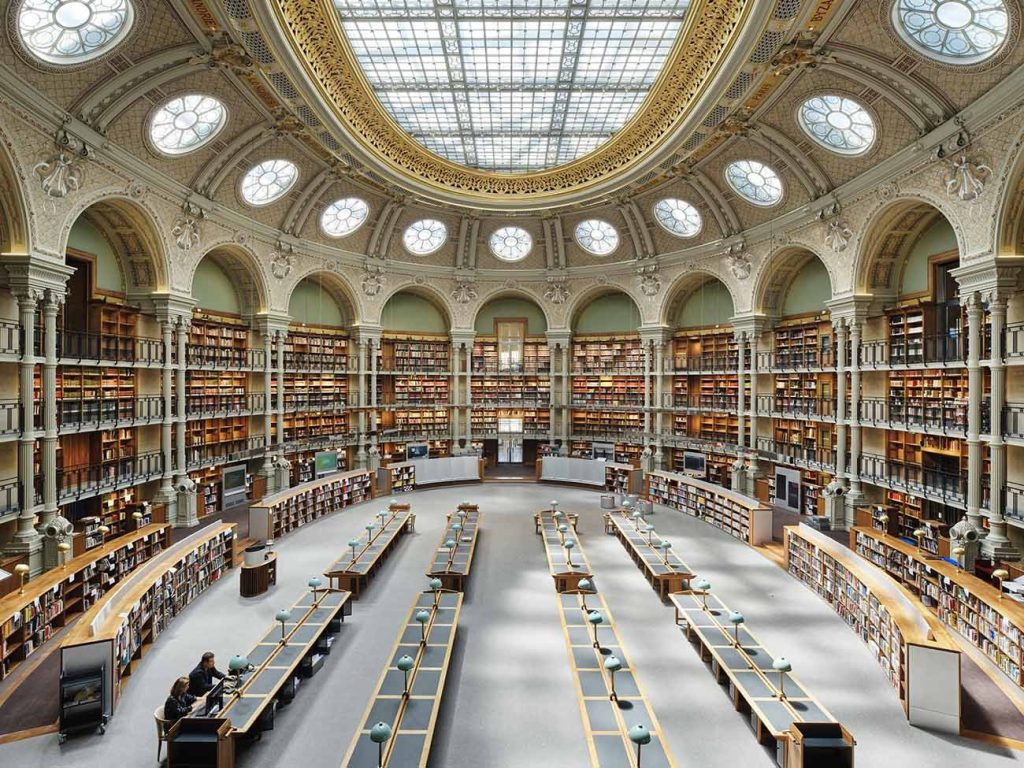
The new well-lit identity of the complex started with the creation of a new entrance to the Vivienne Garden, and of a vast hall with a new, modern staircase in the center of the composition. This entrance, which has allowed the new poetic garden to take its place, reunites three façades that were once at the back of the complex and have now become entrance façades to the Vivienne and Roux-Spitz halls. While the historic mineral and closed Courtyard of Honor respects the tradition of the silence necessary for research works, the design of this new entrance, with its planted threshold open to the city, reflects the desire to invite everyone to discover its world, both a library and a museum presenting its treasures.
Between the courtyard and the garden, the crossing hall symbolizes this link between the world of researchers and the new public. Every single space, every room was the object of a project in itself inside the overall intervention, in which also the horizontal and vertical distributions were redesigned, thus representing a fundamental change in the organization of the building and giving it a coherence that was absent in the past due to the three centuries during which the site was constructed in successive stages. A coherence that, according to the critics of the project, could have been obtained without having to sacrifice, in the name of modernity, elements of great historical value such as the ancient grand staircase.
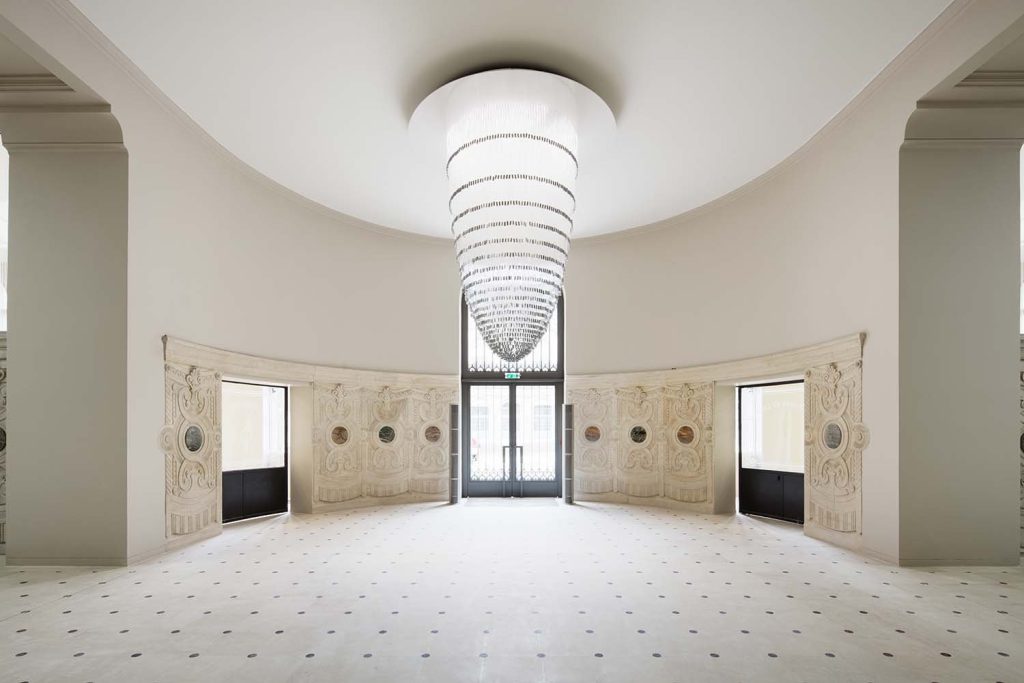
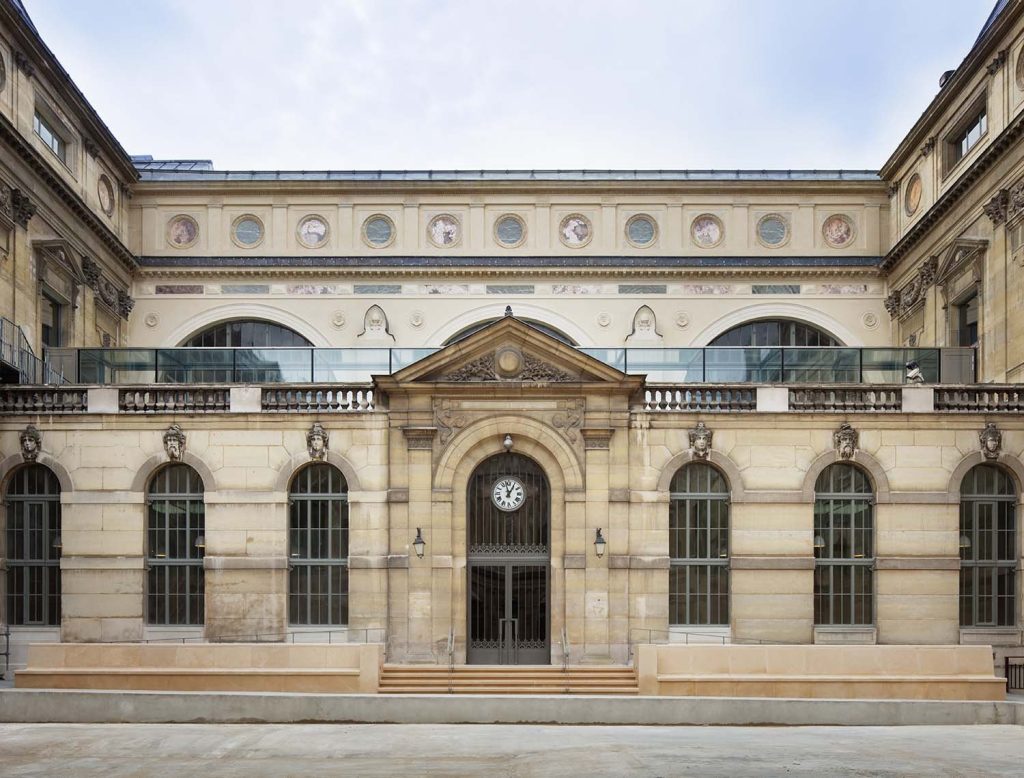
The first phase, completed in 2016, of the restoration and modernization works of the historic Bibliothèque Nationale de France, one of the most important libraries in France and in the world, focused on the buildings overlooking rue de Richelieu, including the majestic Labrouste Room: a spectacular reading room characterized by an ingenious metal structure, nine glazed domes, inspired by Byzantine architecture, 10 m high narrow metal columns and the frescoes of the vaults by the landscape painter Alexandre Desgoffe. After restoring each element to its former glory, the intervention re-established the link between the reading room and its book stacks through the central nave, revealing all the poetics of the place.
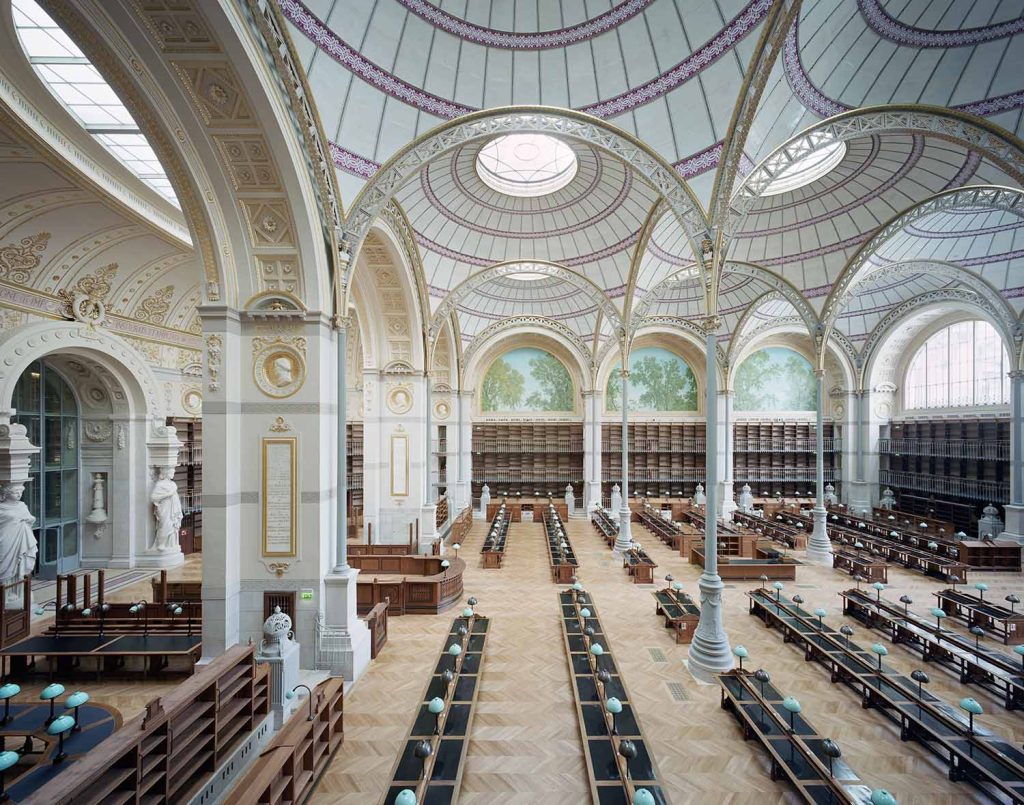
Between 2016 and 2022, the second phase of the intervention extended to the wing of buildings overlooking rue Vivienne, including the Mazarin Gallery, adorned with splendid frescoes painted by the Italian artist Giovanni Francesco Romanelli, the Mansart Gallery, the Louis XV Salon, the Salon de Luynes and the majestic Oval Room. The latter, an architectural jewel with its decorations, oculi and spectacular glass ceiling, once devoted to bibliographic research, is now freely open to the general public. Here, the aim of the renovation and restoration was not to break with the existing architecture, but to draw inspiration from its shape in order to establish a link between contemporary purposes and the furniture that has been preserved.
The new furniture, made of oak and aluminum-colored painted wood, repeats the oval shape of the room and accommodates the technological equipment to meet every up-to-date need of the public. The lighting has also been redesigned with a series of mirrored lamps suspended along the curved shape of the new furniture, while the original oculi filter natural light during the day and create suggestive lighting scenarios at night. The new museum, which integrates the collections of the former museum of the Department of Coins, Medals and Antiquities, is located on the first floor, inside the renovated Mazarin Gallery, Hall of Columns – which has had its mezzanine floor removed – and Salon de Luynes.
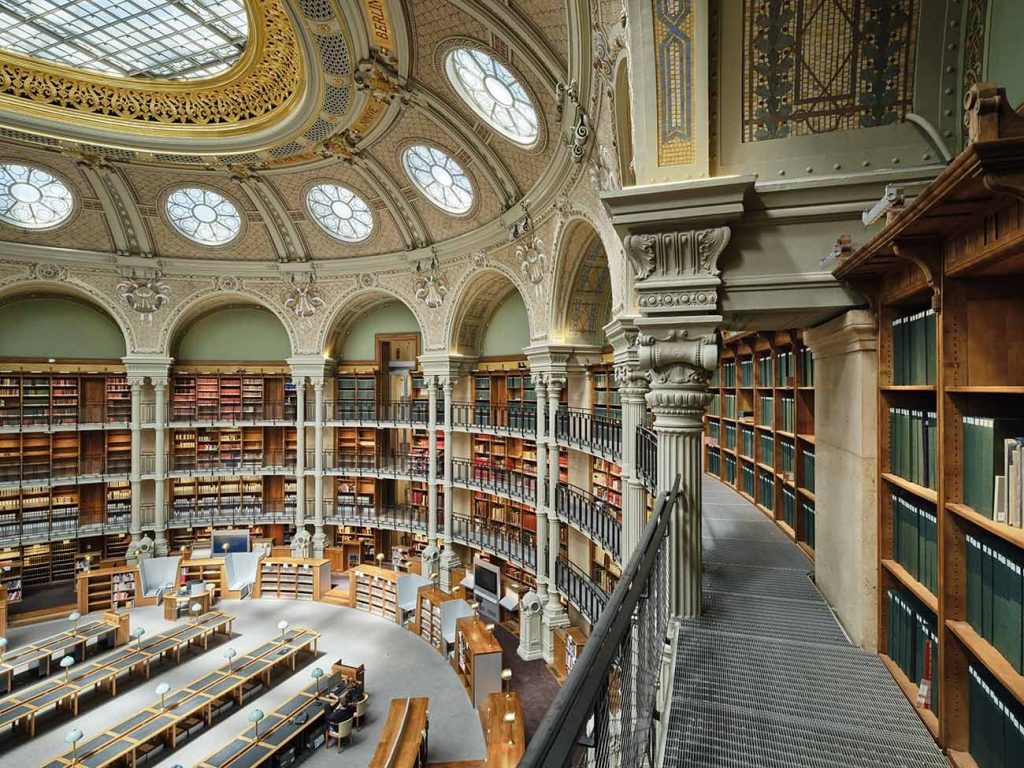
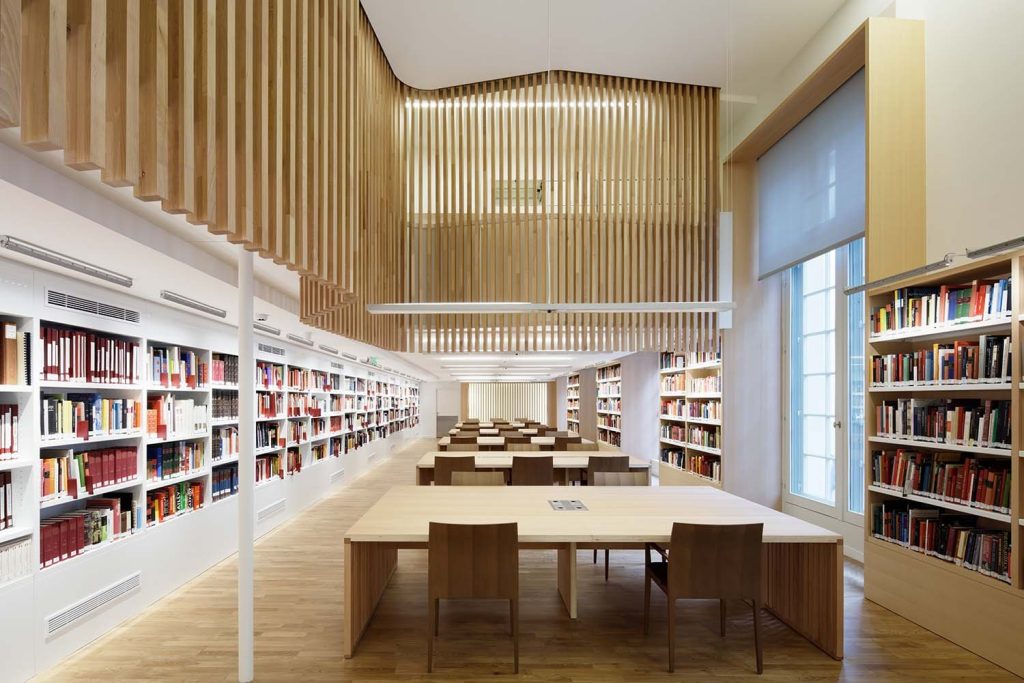
The new external glass gallery, which offers a striking view over the rooftops of Paris and the domes of the Labrouste hall, leads to the west side of the Quadrangle, towards the Department of Performing Arts and the Rondel Gallery, the Labrouste heritage book stack storage area, visible behind its high glass wall. The new large access hall on the first floor is a space filled with light and transparency in a sober universe of stone, glass and aluminum. The fireproof translucent glass floors allow light to penetrate downwards, emphasizing the verticality of the new staircase. The zenithal light is diffused in all sides in a space delimited by the museum galleries. The colors are bright, the works polychrome, the lighting atmosphere suffused. Here, as in other areas, the threshold dividing the spaces is entrusted to the refined and discreet interplay between natural and artificial light, which also suggests their function and the emotional approach of the visitor.
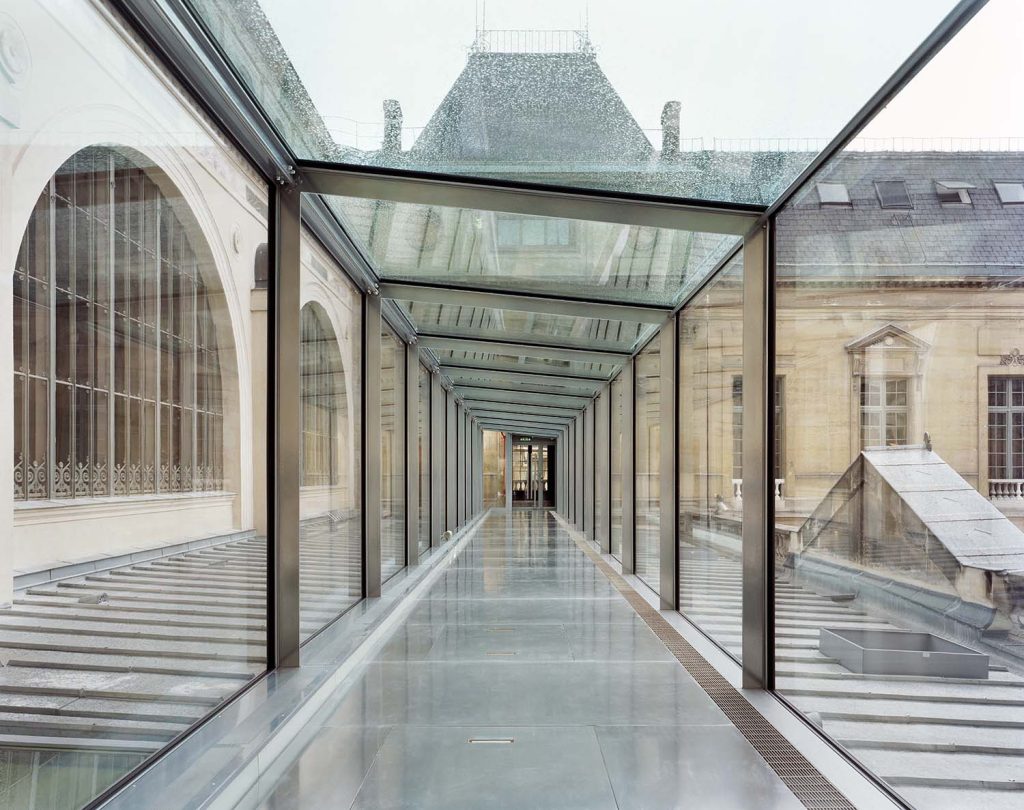
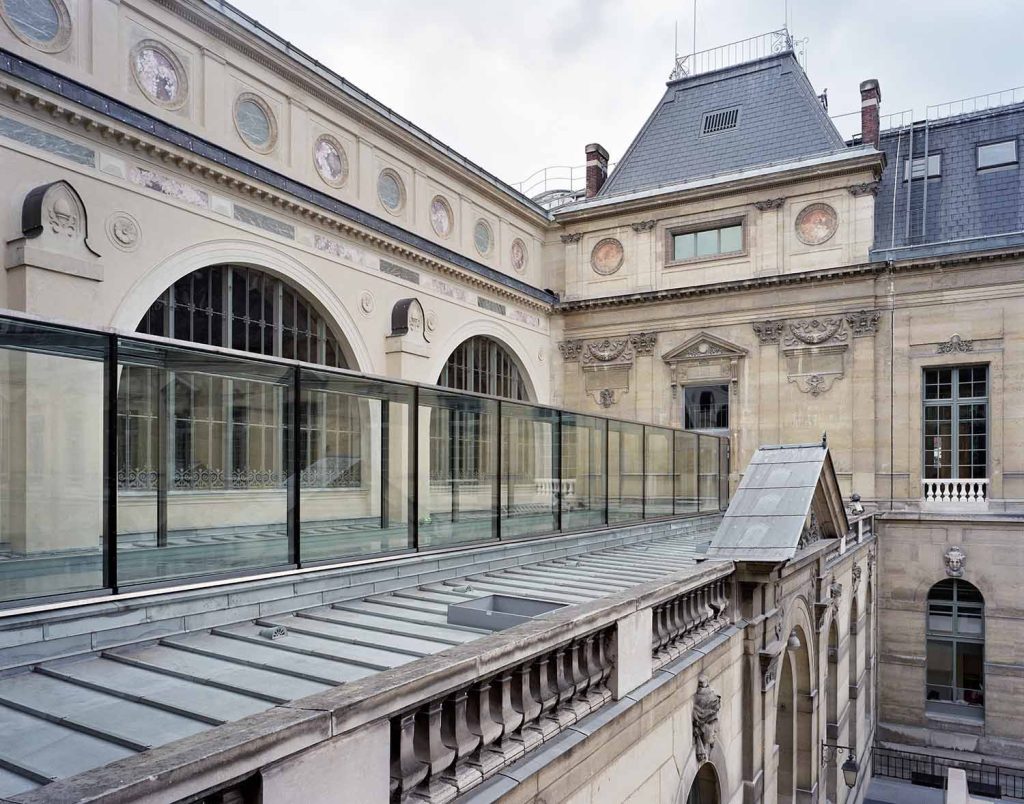
- Location: Paris, France
- Architects: Atelier Bruno Gaudin, Virginie Brégal with Raphaele Le Petit project manager assisted by Guillaume Céleste, Nicolas Reculeau and Céline Becker
- Completion: 2022
- Area: 69.036 m² (Net Internal Area)
- Technical engineering: Egis bâtiments with Régis Lelièvre project manager
- Lighting engineer/designer: 8’18’’
- Architect in chief of Historic buildings: Jean-François Lagneau
- Lighting engineer for the Labrouste Room: Cabinet Cizel
- Photography: Takuji Shimmura and Marchand Meffre, courtesy of Bruno Gaudin Architectes
